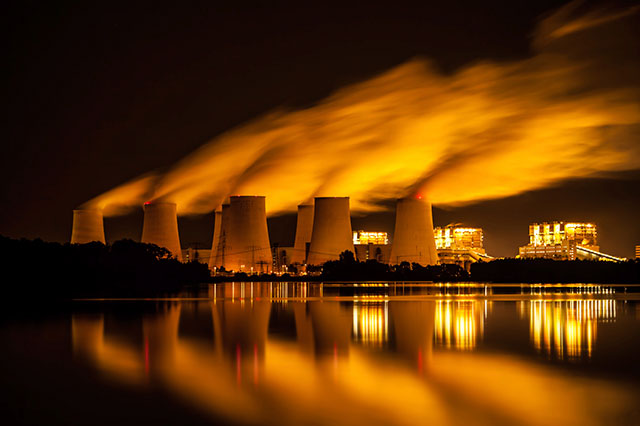As India works on its voluntary commitments to reducing its greenhouse gas (GHG) emissions, Indian experts have explained how the country could cut its carbon emissions from short-lived climate pollutants by nearly three-fourths using low-cost methods and, in the process, transform the lives of the poor.
The US, EU and China are among the major countries which have declared their commitments; the global community is waiting to see what India does.
India has already indicated that it is going to take minimalist steps as regards its “Intended Nationally Determined Contributions” or INDCs (as they are known in UN negotiations), as Environment Minister Prakash Javadekar said. India will take a further cut on its emission intensity – the amount of energy used to produce a unit of GDP – from 20-25percent on 2005 levels to around 35-40 percent.
To an extent, the current science on climate change justifies this policy, as speakers observed at the sixth annual climate conference, organised by the Tata Institute of Social Sciences (TISS) in Mumbai, on equity in the forthcoming UN climate summit in Paris this November.
TISS has developed a “carbon budget” for both industrial and developing countries, which provides a clear glimpse of what each is entitled to emit in an equitable framework.
The total amount of emissions from the start of the industrial revolution in 1850 till 2100 is 641 gigatonnes of carbon equivalent (GtC, 1 Gigatonne = 1 billion tonnes), according to Tejal Kanitkar of the Centre for Climate Change at TISS.
If the world’s climate is not to spin out of control when mean temperatures rise by two degrees Celsius above 1850 levels, there is a total budget of 270 GtC till 2100, as against 371 GtC already emitted from that baseline till 2011.
Developing counties have only “spent” 97 GtC out of the 371 GtC so far.
Industrial countries have only 50 GtC to spend till 2100, while developing nations have 220 GtC left.
However, based on their INDCs made so far before Paris, rich countries will already exceed this budget by 2030 alone.
If the model developed by TISS with the Delhi Science Forum, which takes into account “historical responsibilities” or past emissions, is applied, rich countries can only spend 39 GtC till 2100.
If developing countries leave it to “business as usual” and commits to what “we think is reasonably possible”, Kanitkar says, a two percent Celsius rise is inevitable.
But if they cut their emissions steeply, their development plans will go awry, what Kanitkar terms a “lose-lose situation”.
India’s energy options: What greater efficiency could do
While holding industrial countries responsible for putting the world’s climate – and consequently development – back in order, Kanitkar also believes there are tangible, quantifiable trade-offs in undertaking mitigation actions domestically.
“We can’t be cavalier about it – lots of homework is needed,” she says.
This can be taken further by examining India’s energy options. An aggressive pursuit of efficiency can be a win-win situation, according to Ashok Sreenivas of Prayas, a Pune NGO working largely on energy.
The potential value of saving electricity from appliances is Rs 2.50/kWh (per kilowatt hour, a unit of electricity).
Buildings can be better designed. Improvements can be made in industrial processes, vehicle technology and agricultural pumps.
This requires imposition of standards, such as those introduced by the Bureau of Energy Efficiency. There can be incentives and penalties. This will also create a market for energy-efficient processes and products.
Transport accounts for a tenth of India’s GHG emissions. There could be a shift from road to rail across the nation, greater use of public and non-motorized transport in cities and better spatial planning.
These options will not only reduce GHG emissions but also reduce costs, improve mobility (and hence access to education, jobs and the like), reduce imports and, not least, improve air quality.
How helping the poor could help India
As many as 800 million households have to make do with poor cooking fuels – a form of energy which is even more vital than electricity. This is both domestically polluting and damaging to the climate.
It also has severe health impacts, Prayas points out. As many as 1.5 million people die prematurely due to household air pollution. It causes 25 million disability-adjusted life years or DALYs – a measure of overall disease burden, expressed as the number of years lost due to ill-health or early death.
Women and young children are most affected in rural homes, while housewives and girls fetch most of the fuel.
The suspended particulate matter and soot generated by inefficient chulhas or cook stoves form a controversial meteorological phenomenon known as the Asian Brown Cloud. These also get deposited on the highest reaches of the Himalaya and the black particles on the snow absorb more heat, causing it to melt.
Apart from the switch to more efficient chulhas, there is a clear development case for rapid uptake of clean, modern fuels like liquefied petroleum gas (LPG), electricity and biogas, Prayas believes.
There are technologies to switch to more efficient brick kilns, designing them in zigzag lines, rather than a conventional trench. At present only 2% of the country’s kilns employ this process and this, once again, calls for a policy prescription.
Bricks can also be fashioned from fly ash, waste from coal-fired power stations, without firing them. Only 12% of the nation’s fly ash is currently used for this purpose.
As speakers at the TISS conference emphasised, while India has to demand greater contributions by industrial countries at Paris, along with funds and technologies for developing countries to mitigate catastrophic climate change, India can voluntarily cut its emissions with such low-cost methods, which are entirely in its enlightened self-interest and vital to its development progress.
(In arrangement with IndiaSpend.org. Daryl D’Monte is chairperson, Forum of Environmental Journalists of India. The views expressed are personal)

